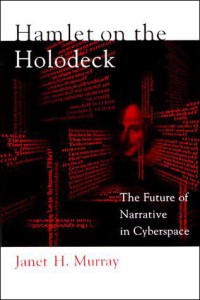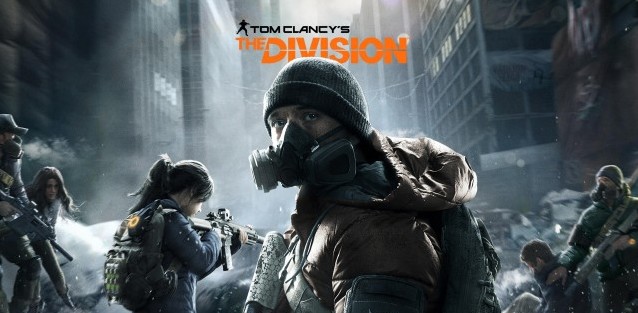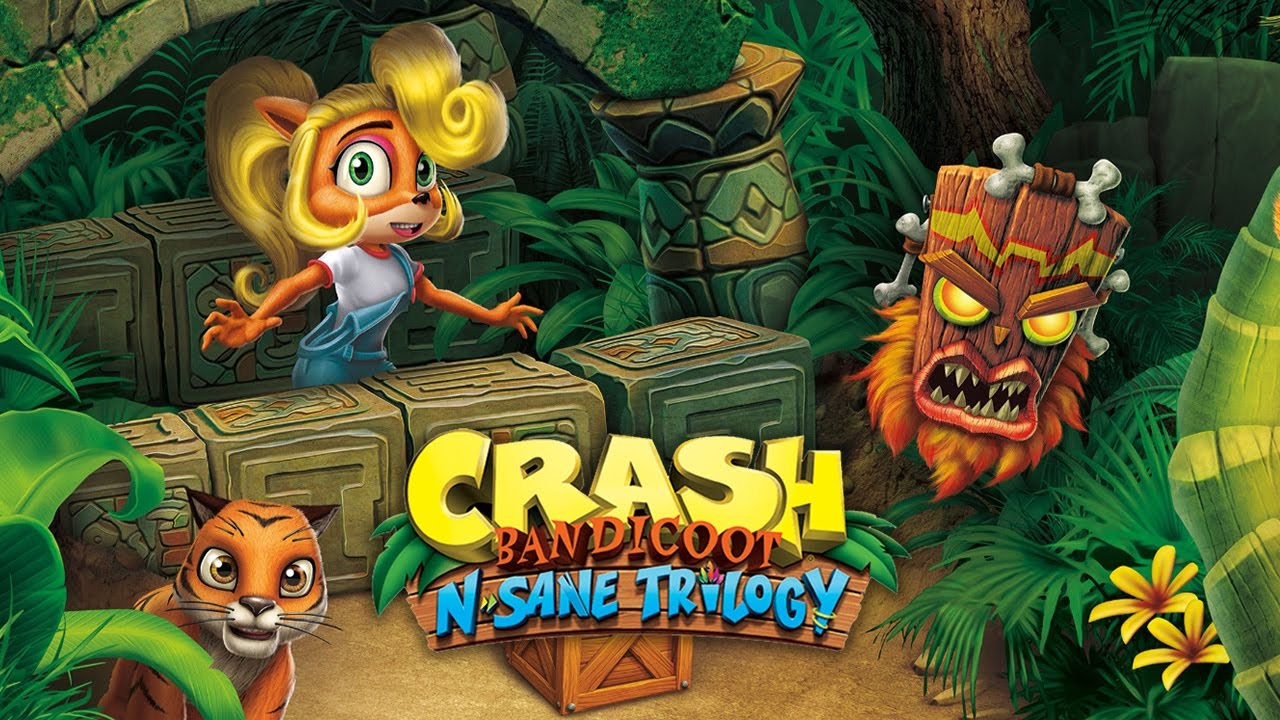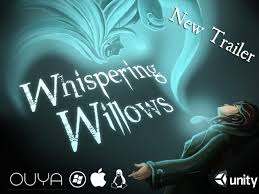There has been a lot of discussion over the past week about Ian Bogost’s recent article in The Atlantic entitled, “Video Games are Better Without Stories,” an article in which Bogost argues, ultimately, exactly what his title says–that is, that the idea of games seeking to tell stories is an “unambitious goal,” one that he says games should abandon in order to “pursue the one they are already so good at: taking the tidy, ordinary world apart and putting it back together again in surprising, ghastly new ways.”
There are many seams at which this argument falls apart, seams that many have already worked to fray even further in the array of responses that have cropped up in the wake of Bogost’s article. Because what does it really mean to claim that narrative is an unambitious goal? What does it really mean to define games in these ways? And how do such definitions and criteria, then, work to exclude and police games (and those who make and play and study them), to dictate which games count as legitimate and worthy, to construct epistemological hierarchies within the gaming community?
This last question seems to be an especially pertinent one to unpack in relation to Bogost’s arguments here. And that is because Bogost’s claims are rooted in monolithic, patriarchal thought, thought that Bogost haphazardly pokes fun of when manifested in what he calls “old games like Doom and Duke Nukem,” games that he says are easy to blame “for stimulating the fantasy of male adolescent power.” But such fantasies of gendered oppression are not simply manifested in these “old games,” for Bogost’s argument seems intended to stimulate a fantasy of male power of its own–that is, it seem intended to perpetuate the male power fantasy that results in making hierarchical claims to knowledge production. It’s the patriarchal power inherent in making arguments based on prestige or legitimacy, a fantasy of male power that allows Bogost to believe himself the arbiter of truth and knowledge in games. The male power fantasy inherent in believing oneself to be the judge of what is good and right in games, what makes certain games better than others. It’s the kind of thing that results in these methods for gatekeeping in games studies–not just whose games get to count as games, but whose study of them then gets to count as legitimate and valid as well. It’s this kind of epistemological gatekeeping, then, that is the foundation off which Bogost makes his claims.
Tom Battey, in his response to Bogost’s article, underscores the gatekeeping nature of Bogost’s contention that games are better without stories by asking what he says he usually asks “when someone claims one form of media is ‘better’ than another; better for whom?” Indeed, Battey contends that Bogost’s judgments regarding so-called “good” and “bad” (and “better”) types of storytelling are based on the “insidious idea of ‘worthiness,’ that some types of story are worth serious consideration while others are not based on some arbitrary content definition.” What seems insidious, though, is the ways this idea of “worthiness” impacts whose stories are deemed worthy of telling (and by whom). What seems insidious, then, is whose embodied experiences are deemed worthy of being represented. Whose bodies are deemed worthy of being known. And whose bodies, then, are deemed illegitimate. Peripheral. Marginal. Which makes it political.
 It’s political because of the ways erasure is enacted through Bogost’s claims to worthiness in games. It’s a similar kind of erasure that Bogost enacts through his use of the Holodeck to make these claims. In his use of the Holodeck as the framework through which he argues that games are better without stories, Bogost never once attributes this framework to Janet Murray, who originally conceived of this lens (albeit one she implemented in order to make the opposite argument) in her 1997 book Hamlet on the Holodeck: The Future of Narrative in Cyberspace. And by not once crediting Murray for her work, Bogost, then, passes off Murray’s work as his own while simultaneously attempting to discredit her original arguments. It’s a sort of double-erasure, one rooted in male privilege and patriarchy–for it is yet another example of a man taking credit for a woman’s work in an effort to silence and control.
It’s political because of the ways erasure is enacted through Bogost’s claims to worthiness in games. It’s a similar kind of erasure that Bogost enacts through his use of the Holodeck to make these claims. In his use of the Holodeck as the framework through which he argues that games are better without stories, Bogost never once attributes this framework to Janet Murray, who originally conceived of this lens (albeit one she implemented in order to make the opposite argument) in her 1997 book Hamlet on the Holodeck: The Future of Narrative in Cyberspace. And by not once crediting Murray for her work, Bogost, then, passes off Murray’s work as his own while simultaneously attempting to discredit her original arguments. It’s a sort of double-erasure, one rooted in male privilege and patriarchy–for it is yet another example of a man taking credit for a woman’s work in an effort to silence and control.
In this way, intersectional issues of race, gender, sexuality, ability, etc. are bound up in the concept of narrative. Because, again, it’s political. It’s about bodies and experiences and whose stories get to be told. But Bogost rejects such stories because, he argues, “[g]ames’ obsession with story obscures more ambitious goals anyway.” But what makes these other goals “more ambitious”? More ambitious to whom? And who’s to say that telling stories (especially those that are deprivileged, that are deemed marginal or unworthy) is not an ambitious goal as well?
If we’re going to attempt to excise stories from games, we might as well stop making games. Waypoint’s Patrick Klepek started down this road, saying, “The problem is that it doesn’t matter: games have no choice but to tell stories,” but abruptly veered away from the most obvious follow-up to that statement: games have no choice but to tell stories because they are made by humans, and humans think in stories. Precisely how that happens is debatable, and has been debated around theories like the narrative paradigm, but we order things and seek structure. We played Pong, assuming a wider world of players on a court or at a table, rather than just playing Move Ball With Physics (and even that can be argued as a narrative structure, i.e. the ball begins here and then goes there. Also, it was never literally a ball at all; that is its own story). This is admittedly reductive, but let’s be honest here: so is resurrecting the narratology vs. ludology debate in 2017.
But it’s not only reductive. Because Bogost’s argument is steeped in politics, the timing on such a backward-thinking move right now, especially, is threatening. Brendan Keogh’s quick Twitter response to Bogost’s piece highlights this in visceral ways, offering a reminder that the most recent wave of experimentation in game design comes thanks to the fact that “more women, trans folks, and queer folks are making games more visibly.” Keogh reminds us that this increased visibility brings with it danger, a point Bogost fails to connect to his anti-narrative critique, much as he fails to credit Janet Murray’s seminal work.
Instead of unpacking those political elements, Bogost critiques the much-maligned “walking simulator,” ultimately asking the same question others fall back upon when criticizing exploratory or environmental games in particular: is it a game? If so, why? Does it need to be a game instead of something else? Why not a movie? Why not a book?
Well, why does Skyrim need to be a video game? It’s a pretty traditional fantasy narrative with the added bonus of stopping to help people who can’t manage to do anything for themselves. Destiny? The entire Halo franchise? A Slow Year? Short answer: they don’t need to be games, anymore than any superhero film needs to be a movie (these stories already exist in comics) or La La Land needed to be a theatrical release and not a Special Television Event. These are choices made by creators or creative teams, and with examples like Gone Home, the choice was to tell a story through a slowly unraveling hands-on experience. Many ambience-dependent games could be restructured as linear experiences in other modes. This doesn’t meant they should; the game experience allows for an embodied feeling that is not possible with any other form. Certainly What Remains of Edith Finch could be a comic book, a film, or a novel-in-stories, but the shift to another medium would introduce a narrative distance the creators hoped to collapse through their choice of medium. Life Is Strange, after all, could have been a Choose Your Own Adventure-style book; the game’s central time mechanic invites the player to test options, like flipping to various endings. But there’s a deep and abiding difference between simply skimming possibilities and realizing, in an embodied role, that by doing the “right” thing, you caused a character to meet a very bad end. One of these choices of medium offers a fun romp, forgettable even if potentially intense in the moment; the other offers a chance for the “reader” (player) to work through a horrifying realization of how things connect. This isn’t to say all players will feel anything in such a moment, but the medium is what offers the potential to be present at that narrative juncture.
The dream of the Holodeck isn’t a complicated dream of the novel. It’s a dream of embodied experience. Murray knew that the magic of games wasn’t just in the idea that we could control the action, but in a combination of things: control (agency), immersion, and transformation. Perhaps too, as we’ve written about before, this transformation, this immersion and agency, can offer something no other medium can quite pull off in the same way: empathy practice. Just as games allow players to hone the skill of aiming a virtual weapon at a virtual enemy, so too may games allow players to hone the skill of giving a shit about other people, especially people who’ve had different experiences than they’ve had themselves.
Of course, games are often less-than-perfect at this. An ill-lit room, or a sequence with shoddy controls, can break the spell. But movies and books aren’t immune to this, either. A moment of wooden delivery or a clunky sentence can shatter the reverie of story. Games may struggle more in this regard, but they’ve also been through decades of lightning-fast technological advances, and what’s more, we’re comparing the very best of books, films, and other mediums to a handful of games that represent new styles and modes of game. Gone Home, while an important game in many respects, for many players (let’s not forget them) was an experiment, as Bogost himself pointed out. Gone Home was an attempt to answer a bold question: what happens when you strip away the elements we so often consider essential to games and bring in new elements?
 We don’t expect experiments in these other creative modes Bogost mentions to be perfect. Why then would we expect such a thing from games? Why would we stop trying because the creations have flaws? How is it “unambitious” to continue trying? Without new attempts at narratives, we wouldn’t have a game like Her Story, which is a film, but a broken film, a film made to be sifted through and experienced in a fashion utterly unique to games. Nor would we have Firewatch, a game that manages to mimic the traditional arc of plot while still making space for player agency. The result is a beautiful, melancholy narrative of mens’ experiences, and while a film adaptation is reportedly in the works, it will never quite capture my Henry, or yours. Those versions of Henry exist only in our individual games. We built them from the pieces offered. For some, that will equal connection and transformation. For others, it will be a button-mashing walk in the woods. Such is the nature of games.
We don’t expect experiments in these other creative modes Bogost mentions to be perfect. Why then would we expect such a thing from games? Why would we stop trying because the creations have flaws? How is it “unambitious” to continue trying? Without new attempts at narratives, we wouldn’t have a game like Her Story, which is a film, but a broken film, a film made to be sifted through and experienced in a fashion utterly unique to games. Nor would we have Firewatch, a game that manages to mimic the traditional arc of plot while still making space for player agency. The result is a beautiful, melancholy narrative of mens’ experiences, and while a film adaptation is reportedly in the works, it will never quite capture my Henry, or yours. Those versions of Henry exist only in our individual games. We built them from the pieces offered. For some, that will equal connection and transformation. For others, it will be a button-mashing walk in the woods. Such is the nature of games.
Ultimately, it doesn’t seem games are “obsessed” with narrative at all. Rather, games are obsessed with experience, which is what games do best; it’s what they are. And it isn’t for any one of us, not even Ian Bogost, to universally determine which experiences are valid and which are not. Even what Battey calls the mostly static plots in games like Gone Home and Edith Finch offer exactly what Bogost is asking for: a focus on taking things apart and reassembling them in surprising ways. Gone Home isn’t just a walk through a house; it’s something else altogether, an enacted experience offering players the chance to do something they can’t do anywhere else. If these games are flawed, we can take what’s there and learn how to try again. Next time, we fail better. But it’s up to us as players to bring something, too: we must bring vision and a willingness to experience. The Holodeck, after all, isn’t a passive trip into a story, like an afternoon spent with a good book. The Holodeck requires active engagement, movement and consideration. We must be the ones to take things apart. Games can only give us the pieces. What we do with them is always up to us.





3 thoughts on “A Dream of Embodied Experience: On Ian Bogost, Epistemological Gatekeeping, and the Holodeck”
the defensiveness in response to Bogost’s article and the attempt to yoke progressive politics against it with words like “patriarchy” are remarkable. What you and all the critics fail to do is to define “narrative” any more than Bogost did or tried to. Or to say why it’s remotely important. At one level, Bogost’s provocation was clearly meant to suggest that games are their own medium and don’t need to rely on other media for validity, so from that perspective you are pushing back against what one would think would be a position you might champion.
your claim that Bogost owes Murray a debt is bizarre. Murray did not invent the holodeck and did not invent the idea of using it in discussions of VR or games; if anything, Star Trek: TNG is the source for the idea. An article in The Atlantic is not meant to be scholarship and does not need to cite every . I’m not clear that Bogost’s argument derives from Murray’s at all (they teach at the same school, too, so it’s likely Bogost would be sensitive to crediting Murray with concepts she originated). Further, Murray is arguing something that cuts against your point, which is that narrative itself is a kind of virtual play space that encompasses many different media, an argument which has merits IMO but suggests that what she means by “narrative” is not what we ordinarily mean by it, a connected linear story featuring one or more characters.
Can videogames do story in this sense? No doubt. But why gamers should be defensive when someone points out that most gameplay is very different from the experience of reading a book or watching a movie is really beyond me. You are taking it as negative, when I take it the opposite way. As an avid gamer, I have to say that I rarely play games for the stories they offer, and that when I want to experience a story I read a book or watch a movie. And many games that attempt to do story do not do it anywhere near as well as books and movies, and seem to be stretching to prove themselves in some way rather than embracing the fact that they are games. This is clearly Bogost’s point. What in the world is so wrong with that?
I think you make some good points here – there is a lack of definitions of narrative, story, and plot in games (Battey gets into this in the article linked, which is part of why we linked it), but no matter how most scholarship slices it, we still end up comparing games to other narrative forms, and while there’s overlap and comparisons can be made, games need their own measures and definitions. It’s something I think about often, and one of the reasons I like working with Bianca, as she comes from a lit background and I am working in rhetoric. We need multiple perspectives, because not only are games unique forms, how players enter games adds new dimensions for consideration, I think – which is why the original Bogost piece falls short for me. For the good points it does make, it still only reflects one way of considering games.
As for the Murray, the Atlantic may not be a scholarly outlet, but Bogost is a scholar and Murray is his colleague. I do think he has a responsibility to her work and to ethical public scholarship.
Brilliant article :).
For me the Bogost argument just seems a bit stale. I think there is value in asserting some level of independence for video games as a medium but ultimately Bogost doesn’t really manage to claim it. If he is trying this is undermined by the ubiquity of his argument across art forms. People have long argued, for example, that the story in an opera or a ballet is irrelevant and that one should focus purely on the beauty of form and music. Or, that one should not look for meaning in painting and instead focus purely on technique. Additionally art-forms that insist upon narrative (soap operas, for example, and I would say video games themselves) are regularly denigrated as less worthy than art-forms for which it is easier to suppress content.
Ultimately it is a call to elevate the art-form out of the dirt of material lives. But, as Pierre Bordieu points out, this kind of distance, this denial of content, narrative and immersion is only easily accessible to the relatively powerful. And beyond that it is a tool used against the working class. The cultivation of a detached appreciation of form to the exclusion of content as the only way to really do(/consume) art prevents access by people who do not have the luxury of ignoring content, of ignoring politics. It prevents access by people who are prevented from thinking of themselves as blank slates.